Tramping (hiking for those non-Kiwis) can appear to be a relatively lonely and solo activity if you’ve never done it before. You wouldn’t necessarily think that walking in the wilderness, enjoying nature, is (like any human social activity) governed by certain standards of expected behaviour. But tramping is actually a pretty social activity. So there are certain things people tend to do (or not do) in order to not tread on others’ toes, and it’s expected that everyone else does the same.
Most of these … behaviours? rules? …. guidelines! Yeah let’s go with that. Most of these guidelines are common sense (e.g. don’t leave the door to the hut open, even if you were born in, or are sleeping in, a tent). But despite this, it amazes me how often people don’t seem to realise the impact they’re having on fellow trampers. I’ll admit that this is a pet peeve of mine. I believe it’s become more of a problem recently with the influx of people to the outdoors (helped along by social media). While I think this influx is generally a positive thing – everyone should be able to experience the outdoors – I also believe that not all of the people that are new to tramping have the knowledge or experience to behave in a respectful way, even if they want to.
So, I thought I’d write up some suggestions to help get people thinking about what they can do (or not do) that will help everyone else around them enjoy the tramping trips too. Even if you tramp all the time maybe it’ll get you thinking, and maybe you’ll have some suggestions to add. My intention isn’t to be sanctimonious and holier than thou. Everyone can do what they want … but wouldn’t you rather not be a dick?
Leave No Trace
The biggest unwritten rule of tramping has now actually been written down – Leave No Trace. In general this boils down to: leave everything the way you found it. You shouldn’t disrupt nature and fellow trampers by your passing. There are seven Leave No Trace principles. As I was writing this post, I realised that almost all of the tramping etiquette tips I was coming up with fell under one of these principles.
1. Plan ahead and prepare
2. Travel and camp on durable ground
3. Dispose of waste properly
4. Leave what you find
5. Minimise the effects of fire
6. Respect wildlife and farm animals
7. Be considerate of others
So here’s my take:
1. Plan ahead and prepare
New Zealand’s Search and Rescue relies on lots of volunteers. They would really rather not be called away from work and their families to look for a tramper who got lost because of poor planning and decisions. Following the Land Safety Code, or planning ahead, is a big part of tramping etiquette, as well as a way to keep you and your party safe. Mountain Safety Council’s Outdoor Safety Code includes the following:
- Choose the right trip for you
- Understand the weather
- Pack warm clothes and extra food
- Share your plans and take ways to get help
- Take care of yourself and each other
I’ve already written a post about the Outdoor Safety Code. It covers all of the things you need to do to keep yourself as safe as possible, particularly for the New Zealand context. Click here to give it a read or click on each principle to do a deep dive.
The only thing I didn’t mention in that post was that if you’re on a in-and-out trip using the same track for the return, it pays to take note of certain landmarks and the timing of these. This way you’ll have an idea how much further you have to go on the way back out. If the track is a little over grown, I also take note of what the trail looks like from the other direction as I hike in so I won’t be caught out coming back.
Please also heed any warnings or alerts on signs. This includes information about avalanche paths, rock fall areas, flooding, drone use, etc., as they’re there for a reason. This also goes for the posted limits for bridges. They’re there for a reason (as you might pick up from the drastic new signage that’s been cropping up). Keep an eye out for those orange trail blazes (and don’t let the pink and blue ones marking trapping lines confuse you). You don’t want to get lost.

2. Travel and camp on durable ground
If you’re following a track then stay on said track, unless you’re bushwhacking out in the backcountry. Not only does this keep you safe (making sure you don’t stray from the track), but following short cuts or stepping off the track for a view can damage the environment. Especially as once one person does it, more people will follow in their literal footsteps.
In terms of camping, a great way to reduce your impact is to stay in our amazing network of backcountry huts that DOC does an amazing job maintaining. As I write this (in February 2020), they’re currently undertaking a massive clean-up operation. Many of the tracks and huts in Milford (including the Routeburn and Milford Great Walks) suffered significant flood/landslide damage in the recent downpours. But if you decide to take advantage of these huts and the mostly well-maintained tracks leading to them, then the least you can do is to pay your hut fees. You should also research ahead of time how much the hut costs, what ticket you’ll need, and whether you need to book online in order to stay at the hut. It’s really sad when I see people free-loading – most huts aren’t that expensive (excluding Great Walks!).
Many DOC huts operate on a first-come, first-served basis. Unless you’ve booked a bed (some of the more popular DOC huts require an online booking to use them), then never expect that you’ll have a bunk. Come prepared with an alternative shelter (which you should already be carrying for safety anyway), and be ready to use this if necessary. If the hut you’re planning on staying in is popular, then plan your trip so you’re arriving early-mid afternoon rather than evening. That way you’ll have more chances of snagging a bunk. However if other trampers do arrive late, don’t punish them by not moving your stuff. If possible try and arrange things so they have a bunk or a mattress (kids top-n-tailing, etc.). Or make room so they can sleep on the common room floor (not as bad as it sounds).
In return for using the hut, it’s expected that you’ll complete a few tasks:
- Obey signage (e.g. don’t leave the door open for the kea / mice to have a party, prop open windows if you’re cooking with gas, etc.). Some of the signage can be really interesting as well, like helpful route details or info on rare wildlife sightings.
- Fill out the visitor logbook. Not just for DOC, but also for your own safety. Plus it’s often an interesting read.
- If you’re using the fire, gather more dead wood to put in the shed to dry rather than just using it all up.
- Prop your mattress up against the wall (if you can without waking people) before you leave to help air it out and prevent rat/mice damage.
- If you’re the last to leave, clean the benches and tables, and sweep the floor (but also clean up after your own mess if you leave early). There’s always a broom in DOC huts, it might just be a bit of a scavenger hunt to find it.
- Ensure the windows and doors are shut securely when you leave.
- If you notice any damage to huts, tracks or bridges, please let DOC and other trampers know as soon as you can.
Regardless of whether you’re staying in a hut or camping, please be careful of water (rivers, tarns, and marshlands). Don’t wash anything using soap in these areas. We want to keep them as pristine as possible.
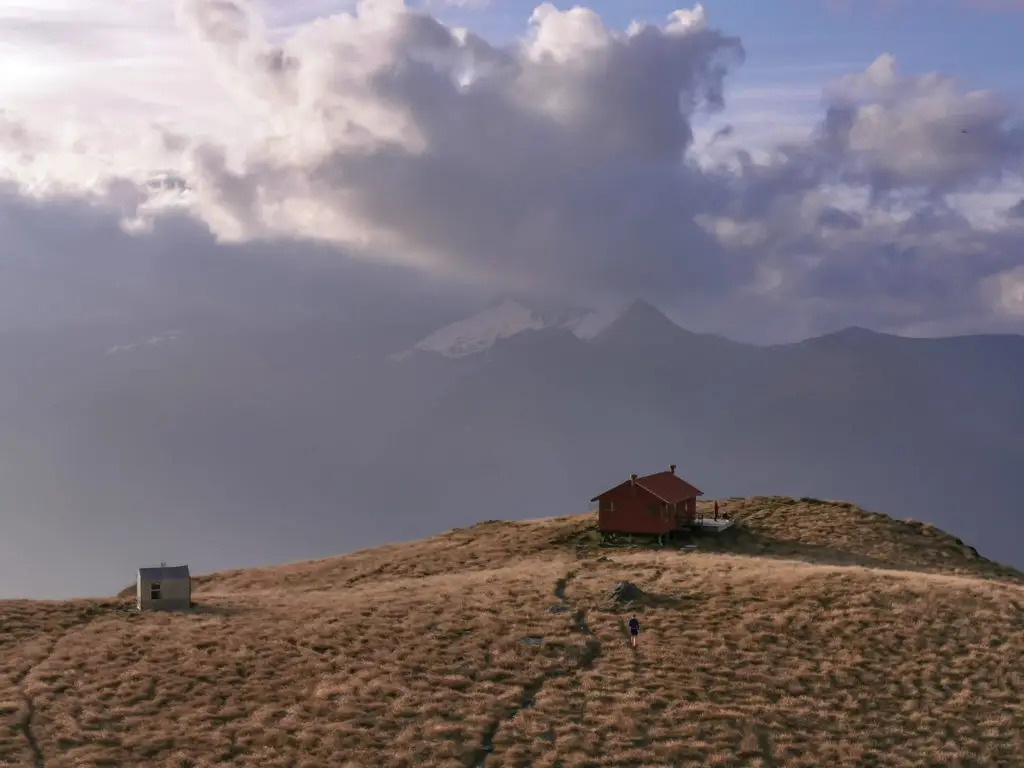
3. Dispose of waste properly
Take everything out with you. ALL of it, unless you’re using long drops. It’s really sad to see rubbish when you’re out in the wilderness, particularly when it’s toilet paper (gross). And it’s not that hard to carry it out. Don’t leave food in the huts either. That’s just leaving it to become someone else’s problem (it’s not as helpful as you’d think). Also, if you pick up someone else’s rubbish then you get bonus tramping points! You’re an awesome person. Go you!
Rubbish includes organic waste, which people seem to think doesn’t present a big problem. I was of this mindset too until a couple of years ago, when someone helped educate me. While throwing aside your apple core (or worse, your bright orange mandarin peel) isn’t technically harmful for the environment, as it will eventually decompose (although it can take a surprisingly long time), it encourages others to litter. It also attracts and supplies food to pests like rats, possums, stoats, etc. that then go on to harm our beautiful native birds. Wilderness have a great article about this here.
If you need to go, you need to go! Toileting can seem like a bit of an issue on certain tracks. However all you have to do is either use the facilities when you’ve got the chance. Or, if there aren’t any facilities, take yourself off the track by at least 30m (100ft) and dig a small hole to bury the waste. I once came across a lady squatting in the middle of the track on a 10 minute walk. (Further context: there wasn’t a toilet at the carpark, and she was walking in high heels). Don’t let that be you. REI have a great article here about how to use the “bathroom” in the outdoors. It’s written with the American context in mind, but it’s still really useful.
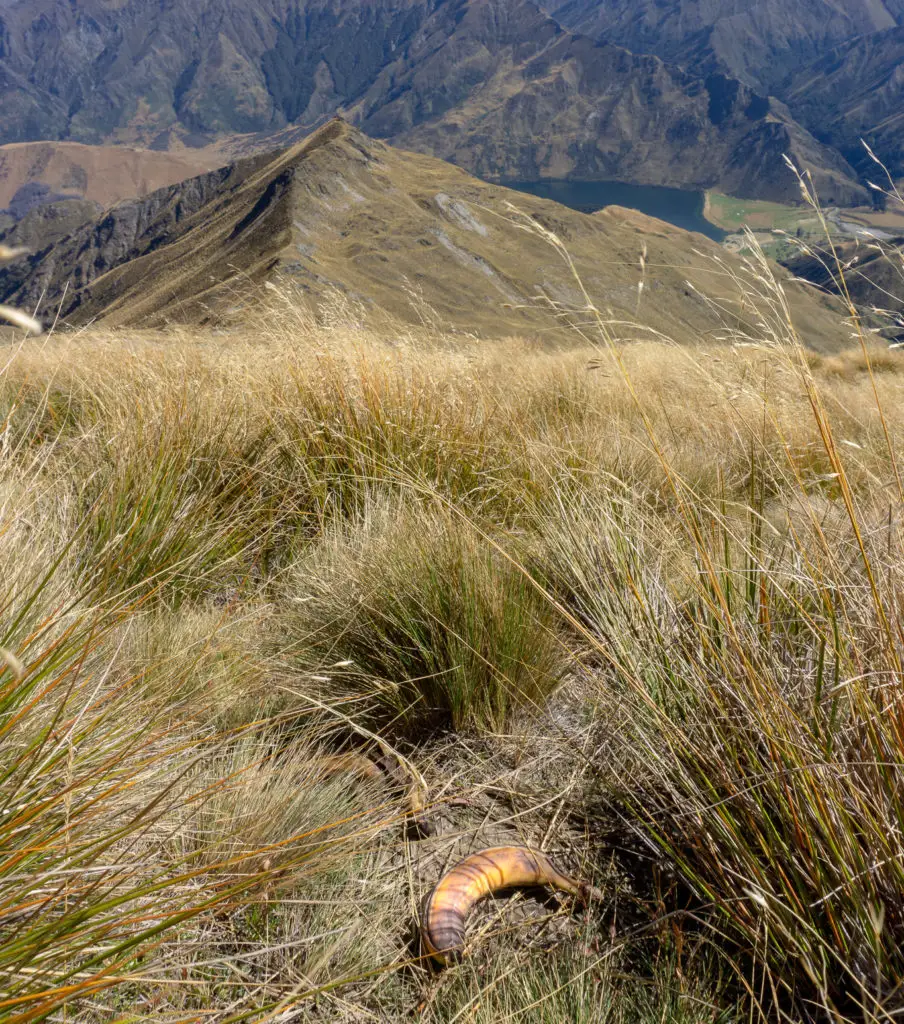
4. Leave what you find
It is illegal in New Zealand to collect plant material from our National Parks or wilderness areas. Authorities take an especially dim view of native plants being interfered with. It’s also illegal to take rocks, gravel or “relics” from National Parks, punishable with up to two years in prison or a fine of up to NZ$100,000 (as per the 1980 National Parks Act). I haven’t heard of anyone being seriously prosecuted for this (have you?), but it’s the law.
Another aspect of this is not just the removal of objects, but the moving of them, such as people making rock cairns. Cairns were, and still are, used as effective route markers, however in recent years their use has become more controversial. If you’ve been to the Blue Pools in Mt Aspiring NP recently or a similarly affected area, you’ll know why. Not only can creating unnecessary rock cairns disrupt others’ enjoyment of the natural beauty of their surroundings, it can also disrupt wildlife, hasten erosion, as well as dangerously misleading trampers from the original route. So leave those stones where they are unless you’ve got a legitimate reason.
One part of leaving things the way you find them that is particularly relevant in the New Zealand context, is the washing of gear between areas – especially if you’re coming into the country. New Zealand is isolated from the rest of the world and our amazing biodiversity was able to develop thanks to this. However invasive pests like didymo and kauri dieback threaten our environment. And they’re spread via human movement. Wash your gear as directed, and especially when you’re coming back into the country from overseas.
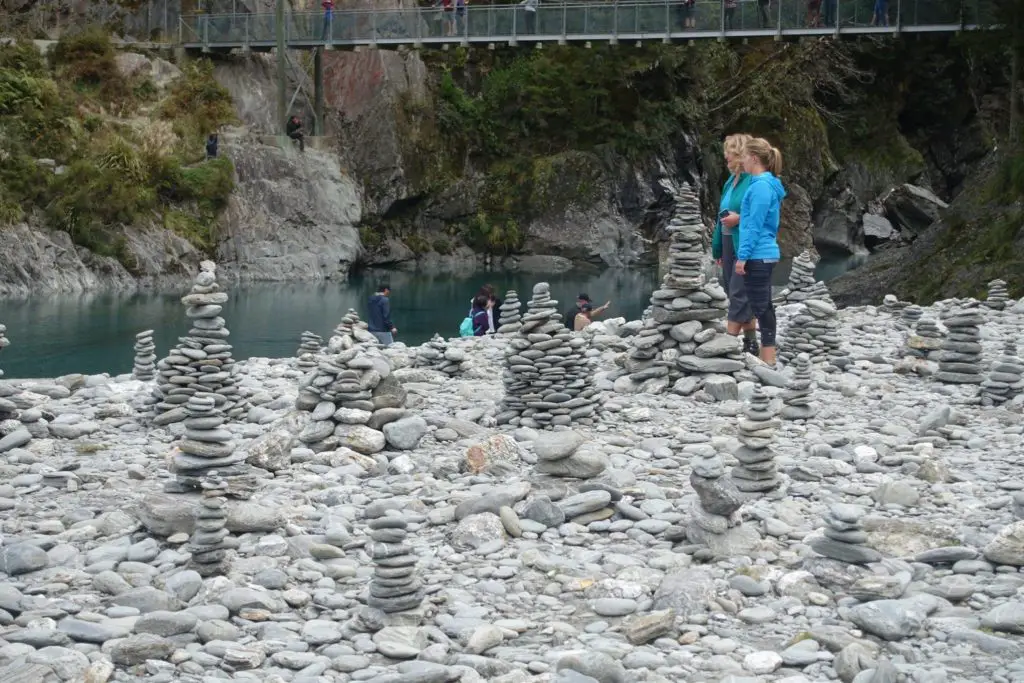
5. Minimise the effects of fire
There is a year-round “Restricted Fire Season” in New Zealand’s National Parks. This means that you can only light campfires in designated DOC areas, or light small backcountry fires for cooking or warmth (and there are certain restrictions around this too, check the above link). There are times when all fires are prohibited for certain areas. Check with the local DOC office or the Check It’s Alright website before setting anything alight.
These restrictions are to protect our beautiful National Parks from direct fire damage (stripping of trees, burnt out rings of stones filled with ash, etc.) and also the damage of fires getting out of control. I’ve only ever partaken of a handful of campfires at DOC campsites myself, but regularly use my little gas burner for cooking and fire places in DOC huts. (Please don’t burn huts down either, make sure nothing is placed too closely to the fire and that you put it out completely before you leave).
In my opinion, campfires are great but not really worth the impact they have. I save toasting marshmallows for my fireplace at home. But that’s just me!

6. Respect wildlife
New Zealand has such amazing diverse wildlife, which is coming under threat more and more from humans and their actions. We can minimise our impact here too. Never feed wildlife. Human food is usually not good for animals (often it’s their equivalent of junk-food or can even be poisonous). Plus it can change the animal’s natural behaviour and make them reliant on (and seek out) handouts from humans. Keep your distance from wildlife, even if, like kea or weka, they try to make this difficult to accomplish (see below photo). DOC have a great blog about this here including the number to call if you come across a wildlife emergency (sick or injured animals, whale strandings, dead animals, etc.).
Additionally, there are many areas of New Zealand where pet animals, including dogs aren’t permitted. Please respect these bans, as they are in place for a reason. I once saw someone running their dog off the lead on a beach where little blue penguins were nesting. Just because you can’t see the reason with your own eyes doesn’t mean it’s not there. You can face prosecution for taking a dog into a restricted area in New Zealand (which includes all of our National Parks); up to a $10,000 fine and/or prison time. That includes just leaving the poor dog in the car while you’re out tramping.
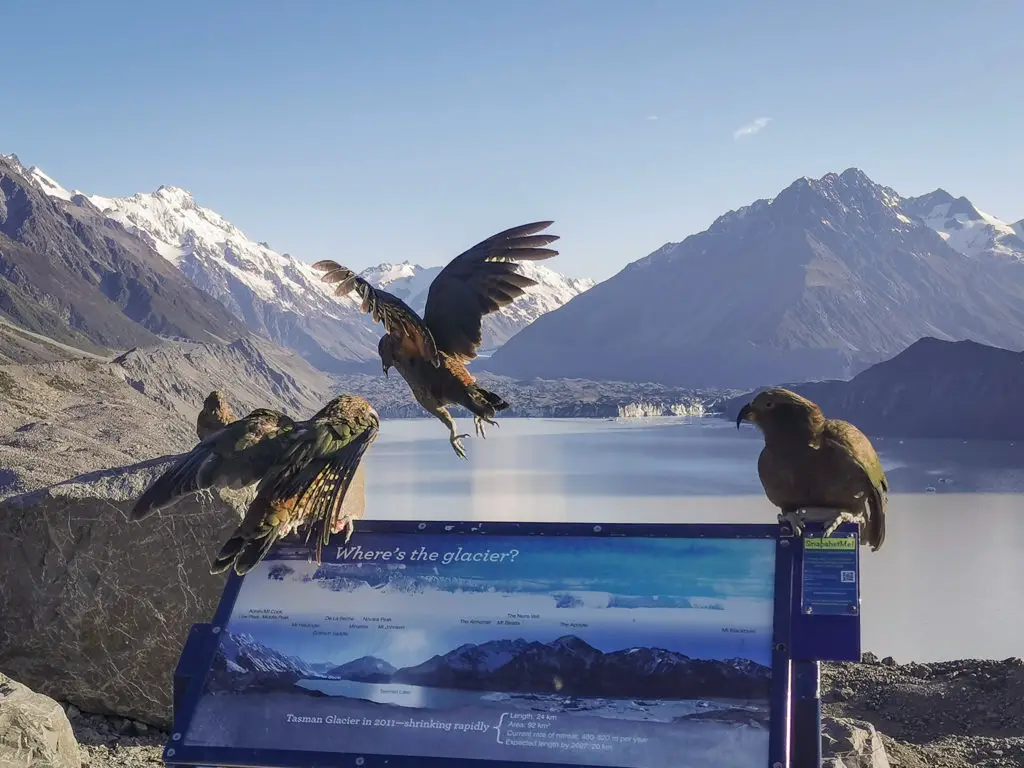
7. Be considerate of others
Ok, so after re-reading this part, I think this is where my pet peeve rant really comes out. Let me know whether you think the below points are valid or go too far.
Don’t hog the track: if you’re hiking in a group, be aware of people coming from both directions and step to the side if you’re stopping. If the track is narrow, which let’s be real, we’re in New Zealand, then the normal rule of thumb is to give way to those coming uphill. I personally break this rule however if a) the person looks like they’re about to die and would thank me for a quick break, or b) I’m part of a large group and they’re only one or two people and jump off to let us past (easier and sometimes more physically possible for one or two people to give way rather than 5+).
Music: if you want to listen to music then that’s all good, you do you! But please listen with headphones (or more safely, one headphone only), rather than booming it out from a speaker. Not everyone wants to listen to your playlist while they’re trying to enjoy bird song.
Gear: don’t spread out your stuff all over the common area or bunkroom. Others need to access the benches, tables and bunks too. The only exception to this rule in my mind is “bagsing” a bunk for yourself by flipping down the mattress and putting your sleeping bag and/or pack on top of it.
Be prepared to share: one of the nicest things you can do for new arrivals to the hut, particularly if the weather isn’t playing ball, (other than already having the fire going) is to offer some freshly boiled water to them for hot drinks. So nice. Part of tramping is sharing experiences, photos, knowledge, cards and possibly supplies if really needed. I always take way too much chocolate on tramping trips (it’s like I think I’ll eat two blocks a day). So I often offer that round while playing cards or sharing stories.
Be friendly, say hello: It’s normal tramping practice to at least say a polite ‘hi’ or ‘kia ora’ to those you’re passing. If the people are so inclined, I will often strike up a quick conversation about track and hut conditions, weather, river crossings, etc. It’s a valuable way of gaining information for what’s ahead (although I often take timings with a grain of salt, everyone walks at a different pace, especially when going up vs. downhill). Even if you don’t want to chat, you should pay attention to people you cross – are they in distress? Do they look well-prepared? Do they look lost? Likewise, if you’ve said a friendly hello, those people will remember you. Hopefully they’ll raise the alarm if you don’t make it to the hut, or provide information about your last known location to Search and Rescue if needed. Saying hello can literally save your life.
Noise: this is my biggest pet peeve when it comes to tramping; people in huts being super noisy at night or early morning when others are trying to sleep. If you’re snoring, that’s fine – there’s not much you can do about that. People should bring their own ear plugs (although random guy at Pouakai Tarns, it sounded like you were respiratory arresting several times during the night – you really need to get your sleep apnoea checked out). But if you arrive late, are playing card games until the early hours, or are getting up really early – please try your best to be quiet. There’s nothing worse than people yelling or cackling loudly, slamming doors. Or coming in and out of the bunk room every two minutes with their head torches on its highest setting while everyone else is trying to sleep (using the red light setting is way less disruptive).
If I know I’m going to be having a later night, then I’ll organise my gear so that I only need to go into the bunkroom once to jump into the sleeping bag I’ve already set up. Likewise, if I’m leaving early then I’ll stuff as much of my gear as I can into my bag the night before (even if it’s not very well organised), so the only real noise will be me grabbing my sleeping bag and tramping pack to take into the common room, where I can then pack them properly without waking everyone up at 6am.
Drone use: if you’re wanting to fly a drone in any of New Zealand’s National Parks, or other public conversation land, you need to apply for a permit with the Department of Conservation. There are other rules around flying drones in NZ too, especially to do with flying in proximity to people, buildings and flights paths. You can find more info here. But in terms of tramping, respect others. The noise from a drone is really disruptive and annoying when you’re not the one flying it. If you’ve got a permit, you should still check with others that it’s ok before you fly near them.
Be prepared to help others: if you’re out in the backcountry and something goes wrong, emergency services aren’t just an easy phone call away. Trampers have to rely on each other when things go wrong, as often that’s all you’ve got! Keep an eye on others. Help them if necessary (sharing first aid supplies, food, information, etc.). Raise the alarm if you notice something amiss or if people don’t return as expected.
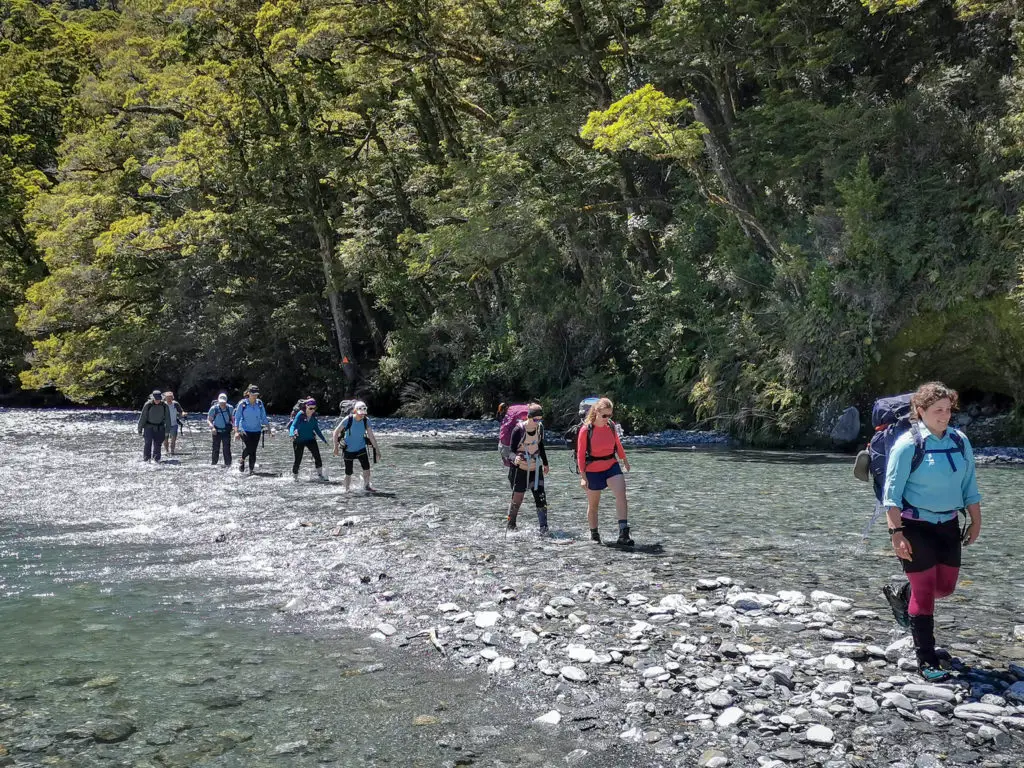
So there’s my list of tramping etiquette guidelines bundled into the Leave No Trace principles! I feel like that got a bit more ranty that I would have liked, sorry! It’s something that I take quite seriously. I don’t like to bother others and wish others would be sometimes be more respectful too.
Like I said at the start though, these are all guidelines aimed at helping everyone have a safe and enjoyable tramping experience. Some of these are pretty well-known and widespread. Others are ones I’ve picked up after spending time tramping in New Zealand and staying at DOC huts. And I’m still learning. You can take and leave what you will. Mostly it just comes down to respecting others, and the above points are how I personally try to do that. Maybe once I’ve got more experience, I’ll be a bit more chill. But at the moment you get neurotic Alice. You’re welcome.
Do you agree with what I’ve listed? Do you have any of your own points to add? Are there any points you disagree with? Do you think I expect too much? I’m always happy to have a discussion and learn more!
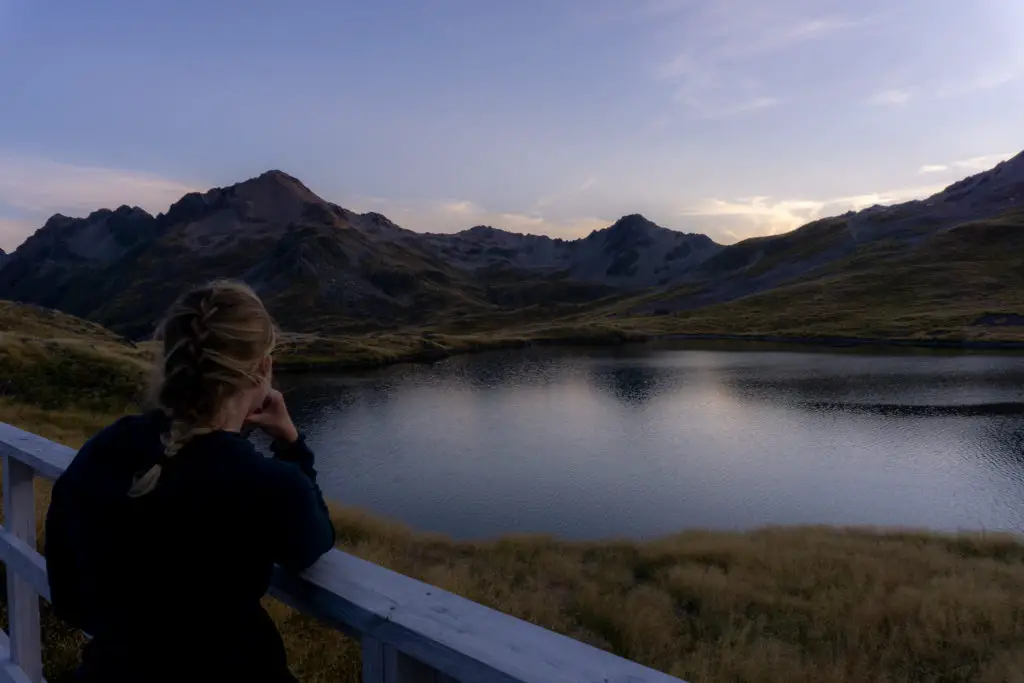
Reader submissions:
So I received a lot of feedback about this article from readers via my Facebook and Instagram. Here are some things that they’ve suggested that weren’t in my original post:
- Don’t smoke or vape around others.
- Don’t get drunk.
- Leave the guitar at home, unless you know how to play more than just Wonderwall or Smoke on the Water
- Dispose of ash extremely carefully (i.e. not under or anywhere near the hut). Often there are drums specifically for this purpose.
- Don’t reset the fire the next morning as it’s often still hot from the night before. Leave some kindling and wood out ready. But don’t risk putting it into the fire when you’re going to be heading out.
- Replace the wood you use (if it’s feasible and legal to do so)
- Keep your phone on silent and think about how loud that alarm needs to be to wake you up?
- Leave doors closed – don’t let the bugs and pests in.
- Leave the toilet seat down.
- Use tank water sparingly.
- Remove your boots before going in to the hut. Some huts have a “mudroom” or antechamber precisely for this. Leave the smelly socks out there too.
Thanks for all the tips team! Keep them coming and I’ll pop up any relevant suggestions.
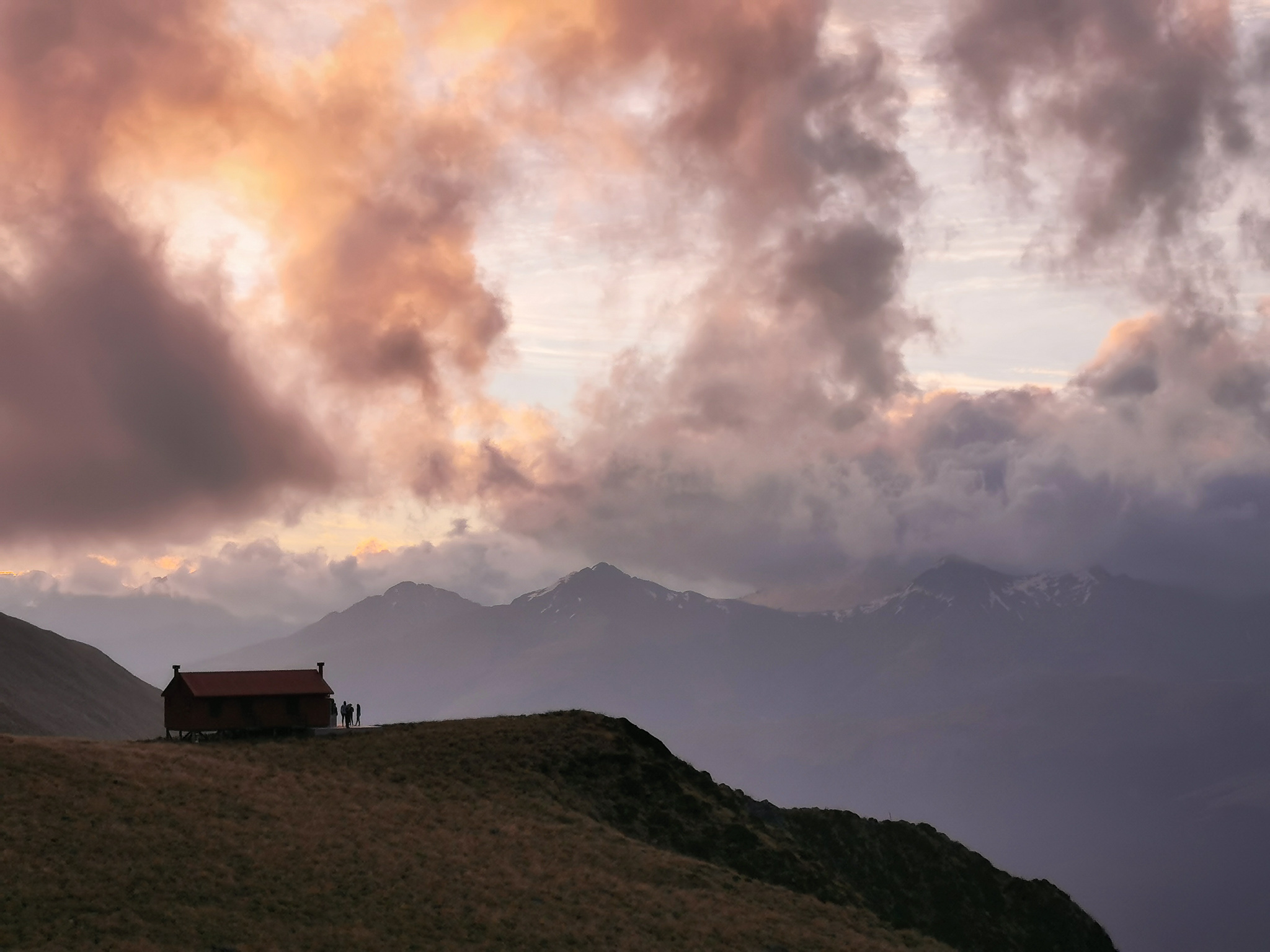
I agree wth what you have written u have made some great points
Thanks Val!
Hey Alice! I love this article! Good job! And don’t chill out on this topic. Back country/tramping etiquette makes the experience better for everyone and is really important for protecting the beaut places we all love. I’m a 36 yr old Kiwi girl who grew up tramping and I also hold kiwi tramping etiquette dear. I reckon I have the exact same list of guidelines/unspoken rules as you have covered. I learned them from my parents who learned them from my grandparents. It’s a culture of respect, care and camaraderie that is engrained in kiwi tramping history. It’s one of the many things I enjoy about being out there. Long may it continue!
Thanks Katie! I definitely picked a lot of this up from my parents too – I actually got my Dad to read over it to make sure I wasn’t going too far and he suggested lots of things for me to add in haha. Great Kiwi tramping is such an awesome experience, I hope it continues too
A great article with excellent photographs that compliment it so well
Thanks Neville for your kind words!
Thanks for writing this Alice. The points are all really important and written in such a way as to appeal to trampers’ good sense and good humour.
Thanks Andy! Glad you liked the info and the humour
Looks good, seems to cover everything. Well done.
Awesome! Thanks for reading Chris
Absolutely love the way you approached this! Especially at the beginning by mentioning that the outdoors are for everyone, but not everyone has the experience or has done the research to acquire most of this knowledge!
Thanks for your comment Alissa! I definitely didn’t want this post to put people off!
What I feel is missing is a comment of boots in huts etiquette. Having started out Tramping in my early teens, (now in mid 40s) removing you boots, even if not particularly wet or dirty before going into the hut was standard. You brought some other form light footwear (eg jandals or other) or had a pair of “hut socks” After living overseas for a bit, I noticed it much more common for people to just burst into a hut with muddy wet boots and far to many react like I’ve asked to sleep with their mother when I ask them remove the boots before coming into the hut. Its something which is no longer an expected rule now?
Yes! Definitely still part of tramping / hut etiquette here in NZ. I don’t bring hut shoes myself (saving the weight for chocolate), just nice fluffy warm socks to wear. Good point Dave.
Thanks for this post. I am off ‘tramping’ for the first time ever next week and I’m excited but a bit nervous. The comment re the guitar made me laugh. I think this rule should also be adopted in hostels.
Definitely